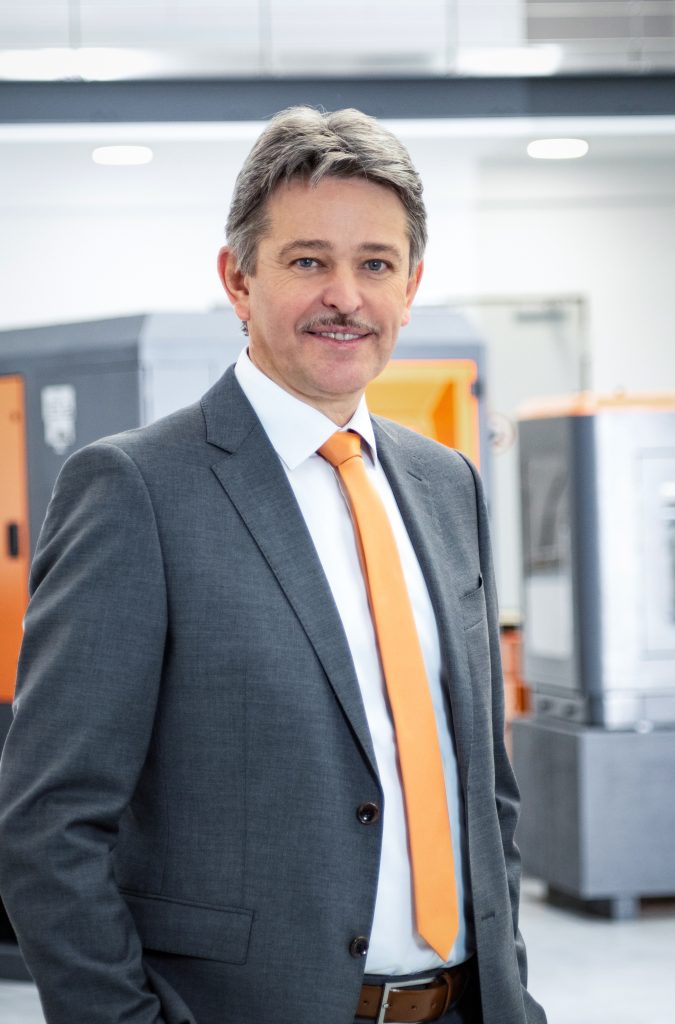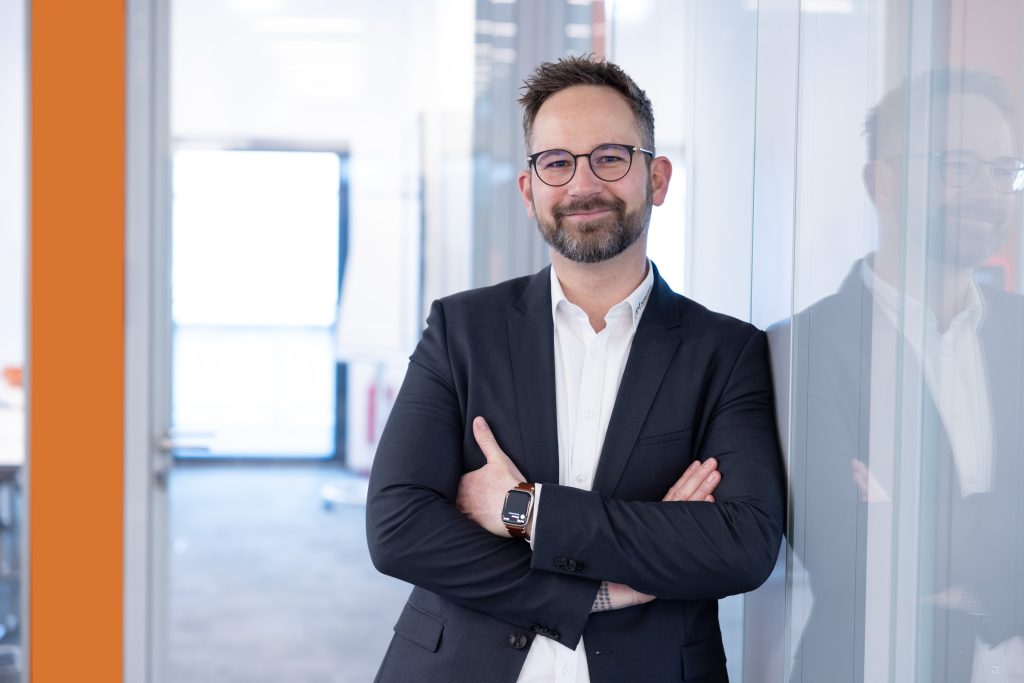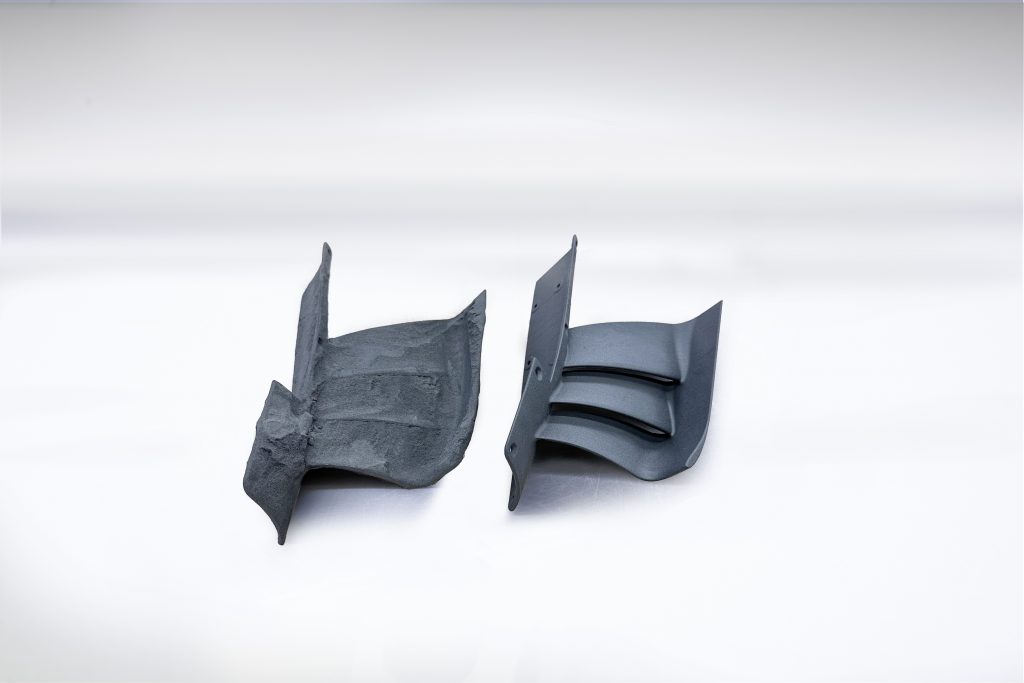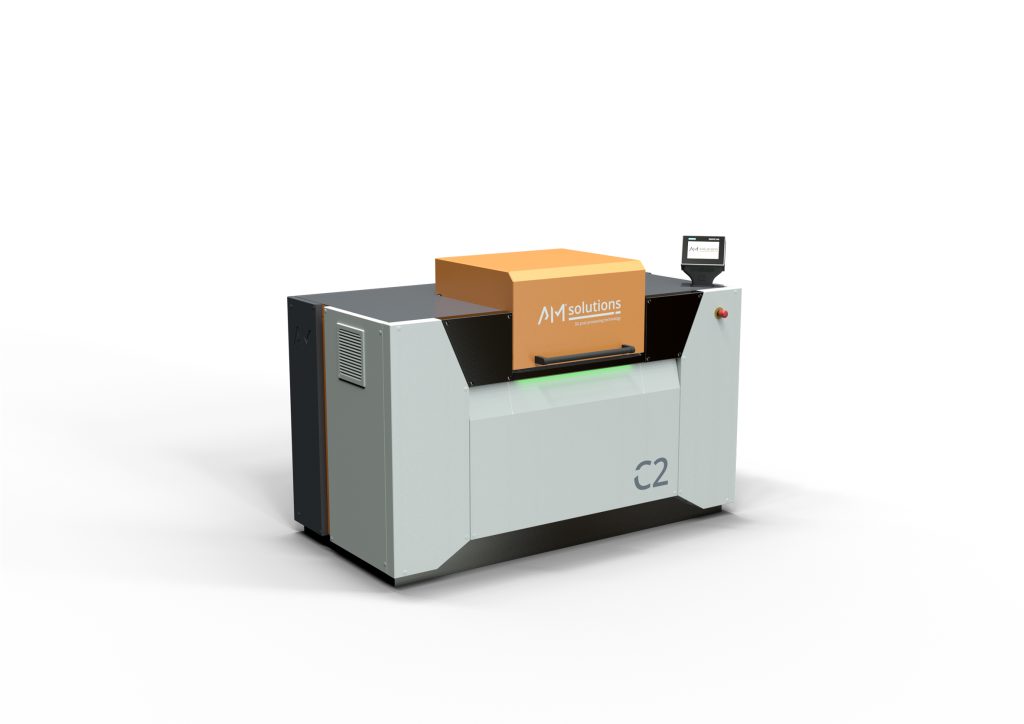Rösler is a well-established firm traditionally known for its mass finishing and shot blasting solutions; via AM Solutions the company has also firmly established itself in the field of additive manufacturing.
I spoke to David Soldan, Head of AM Solutions – 3D post-processing technology, and Volker Löhnert, Managing Director, Rösler Oberflächentechnik GmbH, about how this new avenue invigorates the firm’s innovative spirit.
Around four years ago, Rösler acknowledged the transformative role of 3D printing as a “new production method for metal and plastic parts” and saw the traditional subsets of their business growing alongside a burgeoning array of 3D printed products. Löhnert recalled how customers approached them for solutions tailored to 3D printed parts, which he noted had “a surface much rougher than casting.” He emphasized the contrasting nature of 3D printing environments to traditional casting settings, which led the company to realize that its standard solutions might not suffice in this new domain.
Soldan stressed adapting to the unique requirements of 3D printed parts. Unlike traditional manufacturing processes, the post-processing of 3D printed products required handling of powder, dealing with rougher surfaces, and even venturing into chemistry within post-processing machines. The focus is on innovative 2-in-1 solutions that improve the efficiency and quality of post-processing of 3D-printed products, as they streamline the entire process chain and significantly reduce the cost per piece. Such an approach allows the company to perfectly fulfill the requirements of customers who are looking for high-volume production with 3D printing technologies.
Löhnert also touched upon their extensive experience with consumables and chemicals in the mass finishing process, emphasizing the firm’s readiness to transfer this knowledge to the 3D printing arena. This venture, they hope, will not only expand Rösler’s footprint but will also bring forth solutions that resonate with the evolving demands of the market.
Read more in the 3D Printing Industry Executive Interview series.

AM Solutions Integrative Approach: Streamlining Post-Processing in 3D Printing
As Rösler/AM Solutions ventures deeper into the additive manufacturing arena, David Soldan and Volker Löhnert outline their innovative approach towards streamlining post-processing procedures, through an array of mass finishing and shot blasting processes and, more recently, through chemical processes.
Soldan revealed that the company’s focus is on 2-in-1 solutions, which help reduce the cost of AM post-processing and streamline the process chain, which is fundamental to ensuring AM gets proper traction across industry as a viable volume production technology. Combining different processes in one machine not only saves on capital investment, is also reduces machine footprint and simplifies the post-processing steps in the AM process chain.
Löhnert accentuated the crucial need for standardization in the face of many printers and models in the market. He stated, “It’s also hard to find the single post-processing solution, which fits all,” underlining the complexity that post-processing specialists like AM Solutions are navigating.
Soldan also highlighted an overlooked challenge – the lack of education and expertise in additive manufacturing on the shop floor, urging a more robust educational framework to cultivate a new generation of additive specialists.
Löhnert highlighted AM Solutions’ proactive engagement with leading printer manufacturers such as HP or EOS and power users like Protolabs, Weerg, Shapeways or FKM Additive Manufacturing better to understand the dynamics and needs of the industry. He mentioned, “We are speaking and cooperating with some of the world’s leading printer manufacturers to understand their thinking,” demonstrating a collaborative spirit to develop products and processes that cover a broad spectrum of applications. Further, their alliance with local universities aims to spotlight the importance of post-processing, nurturing a ‘ready for post-processing’ mindset among budding engineers.
Soldan underscored the imperative of considering the entire process chain right from the design stage, saying, “We have to understand that our customers need to have an eye on the whole process chain.” He pointed out that often, the focus is skewed towards reducing printing costs, overlooking the cumulative costs incurred during manual post-processing and handling. The emphasis, he suggested, should be on a holistic view of the process chain, potentially investing more time in the printing process to reap benefits in post-processing.

AM Solutions’ Innovative Leap: Introducing C2, the Dual-Action Chemical Smoothing and Dyeing Machine
Highlighting the company’s “2-in-1 process,” Soldan mentioned that the C2 machine for polymer parts produced on the SLS and MJF powder bed processes embodies this ethos.
The C2’s innovative 2-in-1 Liquid Color Smoothing process is capable of smoothing and dyeing parts in a single pass. The result is a streamlining of the process chain, with both functions being performed by only one machine. It also reduces the total capital investment required and lowers the cost per finished part. Compared to other solutions, the immersion smoothing technology used reduces the processing time and the specially developed process media operates in a more eco-friendly way.
The C2 machine is emblematic of AM Solutions’ forward-thinking approach, marrying chemical smoothing and dyeing processes into one seamless step. Soldan shared, “The big advantage is everything in one step,” indicating a significant reduction in manual intervention and machine transitions, traditionally bloating the post-processing chain.
Discussing the market readiness and scaling of additive manufacturing, Soldan pointed out the hurdles of missing standards and the wide variety of vendors, making post-processing a customized endeavor. He emphasized, “the whole industry together needs to bring down costs,” which is the philosophy driving the C2’s “2-in-1” design. It’s not just about mechanical integration; it’s about a comprehensive reduction in operational costs, energy consumption, and manpower.
Löhnert added the broader objective is to merge processes to simplify operations and minimize technological footprint. He acknowledged existing market systems for smoothing and dyeing as not being the “real end solution” due to their complex and potentially hazardous handling. AM Solutions endeavors to make chemical smoothing more user-friendly and safer.

Unveiling Hidden Costs: AM Solutions Sheds Light on Manual Handling Expenses in 3D Printing
David Soldan and Volker Löhnert explored the economic impact of manual handling in the post-processing of 3D printed parts. While precise quantification remains elusive due to varying circumstances, Soldan estimated that post-processing could account for up to nearly half the total product cost.
Delving into the scaling of additive manufacturing (AM), Soldan noted a sustained demand on the polymer side, although metal is gaining traction. The growth is particularly evident in sectors like automotive, medical, and aerospace, with Löhnert specifically mentioning the uptick in aerospace and medical sectors on the metal side.
The conversation also touched on the definition of scaling within the context of AM, hinting at the need for a deeper exploration to understand the evolving dynamics better.
Addressing the definition of scaling within AM, Löhnert explained that the variety in production volumes across customers is vast. He pointed out a report from AMPOWER (2023) that the overall additive manufacturing market is valued at €9.5 billion in 2022, with a projected compound annual growth rate of 17.7% until 2027. He stressed that the current manual post-processing is a “showstopper” for higher productivity, urging a shift towards automation.
Soldan and Löhnert emphasized the necessity for industry-wide collaborations to define standards and reduce costs. Soldan remarked, “The whole industry has really to work together to bring the cost down. If an additive manufactured part does not provide additional advantages on quality or whatever, the user looks at cost per piece. And when traditional parts are cheaper, users will produce with traditional methods.”
Despite the allure of million-part production runs, the duo acknowledged that the industry’s core is reducing costs, primarily incurred in post-processing. “We have to bring costs down. Some customers are already there, but it’s just a few, and the majority is still in some smaller batches, small series production, and still a lot of rapid prototyping,” Soldan stated.
Highlighting their unique position as a relatively new company nested within the 80-year-old Rösler Group, Löhnert emphasized the agility and long-term vision that sets AM Solutions apart from other post-processing providers. “Quarterly reports to external stakeholders do not drive us. We are an independent family-owned company and can make our decisions regarding customers,” Löhnert noted, underscoring their customer-centric approach.
On geographical focus, Soldan pointed out Europe and the US as their primary markets, albeit with a watchful eye on China’s burgeoning 3D printing landscape. The discourse also touched on sustainability, with Löhnert outlining their efforts to minimize energy consumption both in machine design and operation.

Navigating the Technology Conundrum: AM Solutions’ Quest for Flexibility in 3D Printing Post-Processing
The conversation touched on the technical hurdles the firm encounters as it endeavors to streamline post-processing in 3D printing. As the industry moves towards more efficient printing, post-processing remains a critical yet challenging phase. Soldan emphasized the inherent complexity, noting, “Some of our customers don’t know what they will print next month, but the processing solution needs to fit,” indicating a need for flexibility in post-processing solutions.
While the pace of innovation within the market is brisk, Löhnert is optimistic about the industry’s trajectory, foreseeing 3D printing claiming more territories in industrial production. However, he stressed that irrespective of the advancements in printing efficiency and quality, post-processing remains indispensable. “There is always post-processing necessary to make the surface right,” he remarked.
As new verticals emerge, the executives see significant opportunities, especially as the industry migrates towards producing thousands of parts daily. The shift necessitates scaling up not only on the printing side but also on post-processing, an area AM Solutions is eagerly eyeing. “We are ready for scale-up,” asserted Soldan.
Löhnert laid out the vision for AM Solutions, aiming for a reputation such that when it comes to post-processing, customers’ thoughts gravitate towards their solutions. The goal is to align with customers’ needs concerning surface quality and automation in processing.
In a concluding note, Soldan underscored AM Solutions’ unique position as a bona fide machine manufacturer that handles every aspect of machine production in-house, from laser cutting to 3D printing. He said, “This gives us also the opportunity to listen to our customers if they need something special, which is not standard.” This in-house mastery, according to Soldan, sets AM Solutions apart in the post-processing landscape, poised to drive significant progress in the 3D printing industry. With an eye on future market developments, the firm is invested in ensuring post-processing doesn’t become the bottleneck in the broader manufacturing process chain.
Read all the 3D Printing Industry coverage from Formnext 2023.
What does the future of 3D printing for the next ten years hold?
What engineering challenges will need to be tackled in the additive manufacturing sector in the coming decade?
To stay up to date with the latest 3D printing news, don’t forget to subscribe to the 3D Printing Industry newsletter or follow us on Twitter, or like our page on Facebook.
While you’re here, why not subscribe to our Youtube channel? Featuring discussion, debriefs, video shorts, and webinar replays.
Are you looking for a job in the additive manufacturing industry? Visit 3D Printing Jobs for a selection of roles in the industry.
Featured image shows AM Solutions’ post processing portfolio. Photo via AM Solutions.



